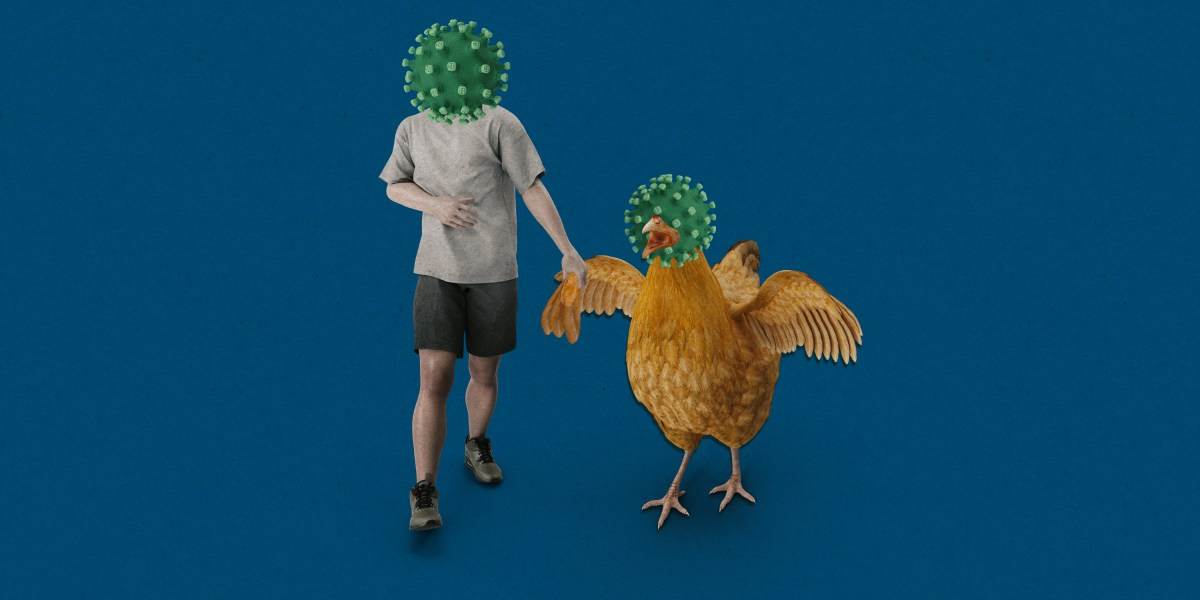Flu season is coming—and so is the risk of an all-new bird flu

Technology tamfitronics
This article first appeared in The Checkup,MIT Technology Review’sweekly biotech newsletter. To receive it in your inbox every Thursday, and read articles like this first,sign up here.
September will soon be drawing to a close. The kids are back to school, and those of us in the Northern Hemisphere are experiencing the joys the end of summer brings: the cooling temperatures, the falling leaves, and, inevitably, the start of flu season.
I was reminded of that fact when my littlest woke me for an early-morning cuddle, sneezed into my face, and wiped her nose on my pajamas. I booked her flu vaccine the next morning.
In the US, the Centers for Disease Control and Prevention recommends the flu vaccine for everyone over six months old. This year, following the spread of the “bird flu” H5N1 in cattle, the CDC is especially urging dairy farm workers to get vaccinated. At the end of July, the organization announced a $10 million plan to deliver free flu shots to people who work with livestock.
The goal is not only to protect those workers from seasonal flu, but to protect us all from a potentially more devastating consequence: the emergence of a new form of flu that could trigger another pandemic. That hasn’t happened yet, but unfortunately, it’s looking increasingly possible.
First, it’s worth noting that flu viruses experience subtle changes in their genetic makeup all the time. This allows the virus to evolve rapidly, and it is why flu vaccines need to be updated every year, depending on which form of the virus is most likely to be circulating.
More dramatic genetic changes can take place when multiple flu viruses infect a single animal. The genome of a flu virus is made up of eight segments. When two different viruses end up in the same cell, they can swap segments with each other.
These swapping events can create all-new viruses. It’s impossible to predict exactly what will result, but there’s always a chance that the new virus will be easily spread or cause more serious disease than either of its predecessors.
The fear is that farm workers who get seasonal flu could also pick up bird flu from cows. Those people could become unwitting incubators for deadly new flu strains and end up passing them on to the people around them. “That is exactly how we think pandemics start,” says Thomas Peacock, a virologist at the Pirbright Institute in Woking, UK.
The virus responsible for the 2009 swine flu pandemic is thought to have come about this way. Its genome suggested it had resulted from the genetic reassortment of a mix of flu viruses, including some thought to largely infect pigs and others that originated in birds. Viruses with genes from both a human flu and a bird flu are thought to have been responsible for pandemics in 1918, 1957, and 1968, too.
The CDC is hoping that vaccinating these individuals against seasonal flu might lower the risk of history repeating. But unfortunately, it’s not an airtight solution. For a start, not everyone will get vaccinated. Around 45% of US agricultural workers are undocumented migrants, a group that tends to have low vaccination rates.
Even if every farm worker were to be vaccinated, not all of them would be fully protected against getting sick with flu. The flu vaccine used in the US in 2019-2020 was 39% effective, but the one used in the 2004-2005 flu season was only 10% effective.
“It’s not a bad idea, but I don’t think it can get anywhere close to mitigating the underlying risk,” says Peacock.
I last reported on bird flu in February 2023. Back then, the virus was decimating bird populations, but there were no signs that it was making the jump to mammals, and it didn’t appear to be posing a risk to humans. “We don’t need to panic about a bird flu pandemic—yet,” was my conclusion at the time. Today, the picture is different. After speaking to virologists and scientists who are trying to track the spread of the current bird flu, I’ll admit that I am much more concerned about the potential for another pandemic.
The main advice for people who don’t work on farms is to avoid raw milk and dead animals, both of which could be harboring the virus. For the most part, we’re reliant on government agencies to monitor and limit the spread of this virus. And the limited actions that have been taken to date don’t exactly inspire much confidence.
“The barn door’s already open,” says Peacock. “This virus is already out and about.”
Technology tamfitronics Now read the rest of The Checkup
Read more from MIT Technology Review’s archive
We don’t know how many dairy herds in the US are infected with H5N1 as the virus continues to spread. It could end up sticking around in farms forever, virologists told me earlier this week.
Manufacturing flu vaccines is a slow process that relies on eggs. But scientists hope mRNA flu vaccines could offer a quicker, cheaper, and more effective alternative.
Some flu vaccines are already made without eggs. One makes use of a virus synthesized in insect cells. Egg-free vaccines might even work better than those made using eggs, as Cassandra Willyard reported earlier this year.
Chickens are especially vulnerable to H5N1. Some scientists are exploring ways to edit the animals’ genes to make them more resilient to the virus, as Abdullahi Tsanni reported last year.
From around the web
Microplastics are everywhere. They even get inside our brains, possibly via our noses. (JAMA Network Open)
The majority of face transplants survive for at least 10 years, research has found. Of the 50 first face transplants, which were carried out across 11 countries, 85% survived for five years, and 74% for 10 years. (JAMA Surgery)
Don’t throw away that placenta! The organ holds clues to health and disease, and instead of being disposed of after birth, it should be carefully studied instead, scientists say. (Trends in Molecular Medicine)
In June, the drug lenacapavir was shown to be 100% effective at preventing HIV in women and adolescent girls. But while the drug was tested on women in Africa, it remains unavailable to most of them. (STAT)
We’re still getting to grips with what endometriosis is, how it works, and how to treat it. Women with the condition appear to have differences in their brain’s gray matter that can’t be explained by pelvic pain alone. (Human Reproduction)



 Hot Deals
Hot Deals Shopfinish
Shopfinish Shop
Shop Appliances
Appliances Babies & Kids
Babies & Kids Best Selling
Best Selling Books
Books Consumer Electronics
Consumer Electronics Furniture
Furniture Home & Kitchen
Home & Kitchen Jewelry
Jewelry Luxury & Beauty
Luxury & Beauty Shoes
Shoes Training & Certifications
Training & Certifications Wears & Clothings
Wears & Clothings
















